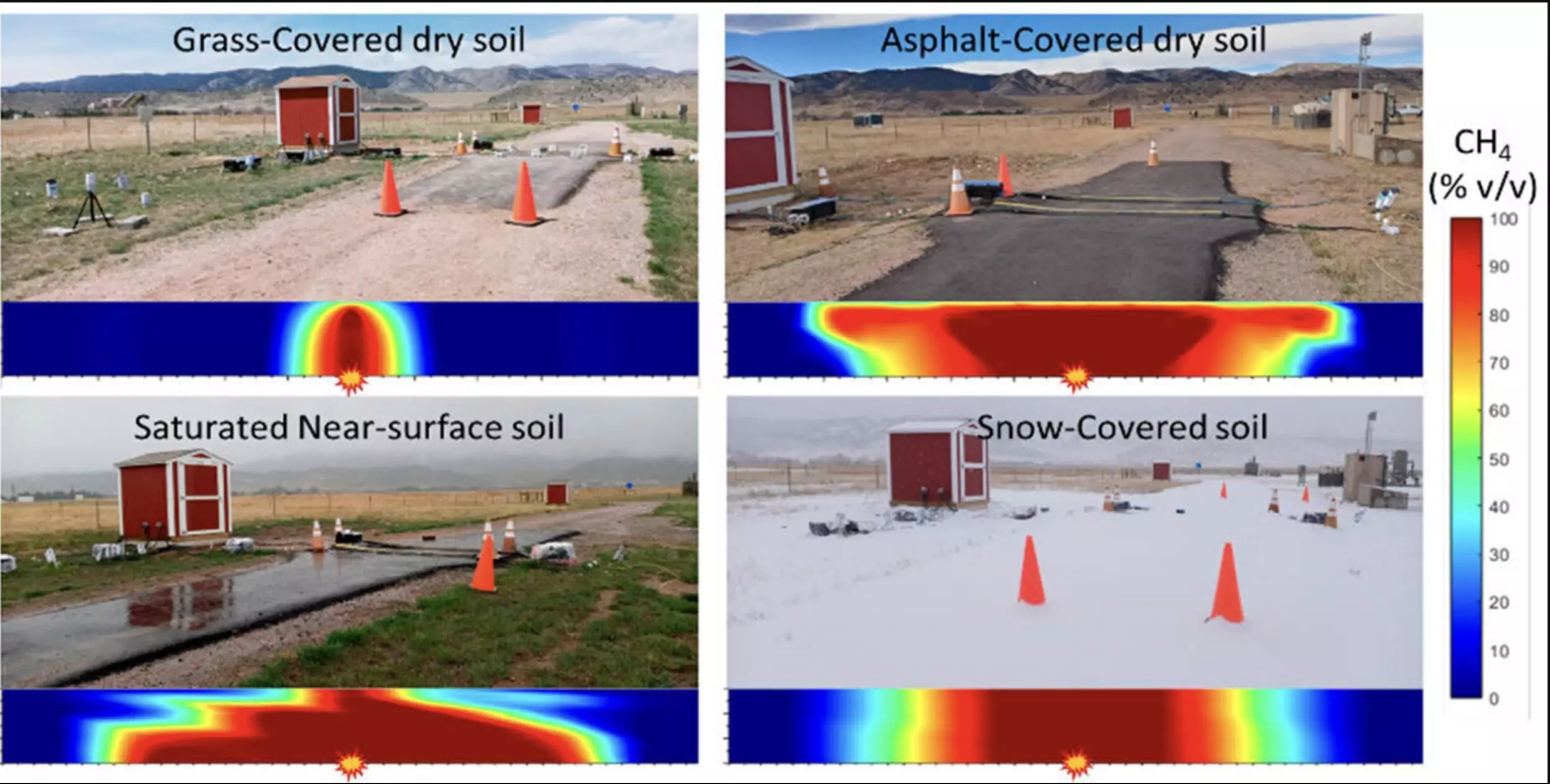The detection and management of natural gas leaks from subsurface pipelines have always been a concern, yet a new investigation led by a team from Southern Methodist University (SMU) has sparked significant interest by unveiling how surface conditions fundamentally alter the behavior of leaked gas. The researchers discovered that water saturation, snow cover, and asphalt can move gas farther and faster than previously understood. This pivotal research has profound implications for both safety and environmental strategies regarding gas pipeline management.
The study’s findings bring a fresh perspective to the discussion surrounding pipeline integrity and leak mitigation. By establishing a connection between surface conditions and subsurface gas migration, the research emphasizes the pressing need for refined protocols that consider these factors when assessing the dangers posed by gas leaks. This level of detail in understanding leak behavior could reshape how utility companies and first responders devise their strategies and prepare for rapid response scenarios.
Experimental Design: A Controlled Environment
The researchers conducted meticulous experiments at Colorado State University’s Methane Emissions Technology Evaluation Center (METEC), simulating gas leaks under various surface conditions. They created controlled leaks over surfaces that included grass, asphalt, and even water- or snow-saturated soil, allowing them to observe how natural gas behaved in these diverse settings. This methodical approach provided compelling data on how gas migrates away from these leaks horizontally and vertically.
The experiments revealed that when gas is released in a saturated environment, it can travel as much as four times farther than in dry conditions. This finding is critical; it compels organizations such as oil and gas companies and emergency responders to reconsider their leak response planning. By understanding that gas can vector away from a leak in such compromised soil conditions, the procedures laid out for addressing gas leaks can be updated and optimized.
Environmental Implications of Methane Leakage
Beyond safety, the study’s insights have significant environmental ramifications. Methane (CH4), the principal component of natural gas, is a potent greenhouse gas, second only to carbon dioxide in its impact on global warming. By identifying how and where methane seeps from compromised pipelines, the study contributes valuable information that could facilitate targeted efforts to mitigate greenhouse gas emissions.
Smits’ assertion about the connection between infrastructure leaks and global warming is sobering. Addressing even a fraction of these leaks could potentially lead to substantial reductions in methane emissions, creating a dual benefit of enhancing safety while contributing positively to climate change mitigation efforts.
The Dynamics of Gas Movement: Insights from Swiss Cheese
One captivating analogy used by lead researcher Navodi Jayarathne describes the behavior of gas leakage likening it to the holes in Swiss cheese. This visualization illustrates how water, gas, or other particles can occupy the gaps within soil strata, allowing gas to escape the direct vicinity of the leak site. The idea that natural gas can travel laterally even post-leak closure— remaining detectable for days— is groundbreaking. These revelations highlight the complexities involved in gas migration patterns that were not previously fully appreciated within the field.
Moreover, the researchers noted that under certain surface conditions, gas not only escapes but does so at an accelerated pace and in large concentrations once it breaches the soil, increasing risks substantially. This critical observation calls for enhanced protocols for monitoring and addressing situations after a leak has ostensibly been contained, ensuring that response teams remain vigilant even when a leak is believed to be under control.
A Call to Action for Response Protocols
Given these revelations, it becomes evident that both utility companies and first responders must revise their leak response strategies to incorporate the nuances of gas migration under varied surface conditions. Operational frameworks should emphasize ongoing monitoring, acknowledgment of surface dynamics, and adaptive strategies that evolve in real-time during and after gas leak events.
The innovative research from SMU positions gas leak management at the convergence of safety and environmental responsibility. By clearly establishing the influence of surface conditions on gas behavior underground, the research lays important groundwork for enhanced policies aimed at safeguarding public safety and protecting our environment. This pioneering study doesn’t just contribute to academic knowledge; it offers actionable insights that can lead to substantial, real-world improvements in how we manage and mitigate natural gas leaks.

